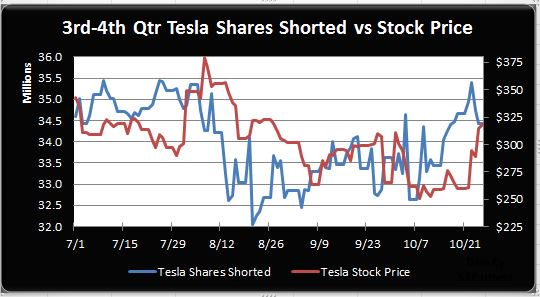Fact Checking
Well-Known Member
Some argue that ICE automakers will go bankrupt and Tesla will take their sales. Okay, but bankruptcies have happened before. I can see the U.S., Germany, and Japan bailing out their automakers. China is supporting its electric automakers. Governments will bankroll these competitors even if private investors won’t.
Note that ICE car bankruptcies isn't the key gating event, but "ICE carmakers being in enough EV transition trouble trying to stay afloat to not have enough funds to invest into the EV transition sufficiently". That's probably the minimum event required to allow Tesla to grow to about 10% of the world automotive market (by revenue) unopposed - which is the ~1 trillion dollar valuation boundary of their automotive business alone.
It’s also possible that private investors will turn over a new leaf and fund electrification / tolerate a temporary transition phase of losses and negative free cash flow.
I find that unlikely for various reasons and lack of historical precedent. When your product cycle is ~3-5 years and hugely capital intensive, then the last thing private investors want to hear is the cessation of profits for 3-4 years for maybe more profits after that time, perhaps. They'll just jump ship, shares are transferable, let others 'foot the bill'.
Changing investors’ mind is kind of the point of Tesla, isn’t it?
No, the point of Tesla was always to attract investors who want to build a disruptive EV company from scratch.
Let me phrase it a bit differently:
- The value of the ICE making business will go to almost zero, relative to today's value. We might quibble about the time frame: 5, 10, 20 or 50 years - but I think everyone rational agrees that it's going to be near zero relative to today's value.
- The only long term value of ICE carmakers have is basically brand value (as long as they manage to maintain it), sales channels, and using their ICE expertise to build EVs.
- The problem is, most of their assets are factories, and there's a lot of negative value from shrinking their ICE business, and their EVs will cannibalize their own ICE sales. As Volkswagen CEO Herbert Diess recently commented: "ICE carmakers are a lot more vulnerable than the public assumes" (paraphrased). Or a key BMW executive recently commented: "We don't want to idle our ICE factories with EV production" (paraphrased). They knew it all along, and they feared it, and 2018 is the year it became obvious to a broader range of investors.
- EV carmakers built from scratch are in a fundamental economic advantage: they are building their business from scratch, with no 3-5 year ICE product plans to disrupt, with no 10-20 years life-time ICE factories to change, with no ICE sales to cannibalize.
- Share prices of traditional car companies will have to drop a lot more from current levels to bring them into the 'build EVs from scratch' risk capital territory that built Tesla.
But I think the majority won't survive, or only in much smaller form, just like Studebaker is the only company still in business today who 100 years ago was in the carriage making business.
Last edited:




